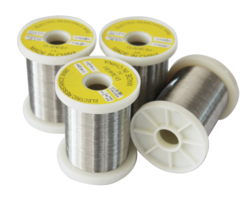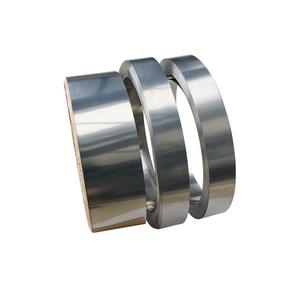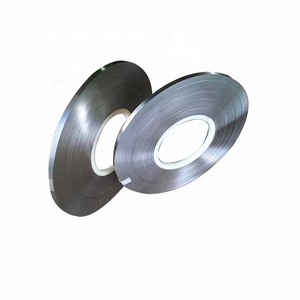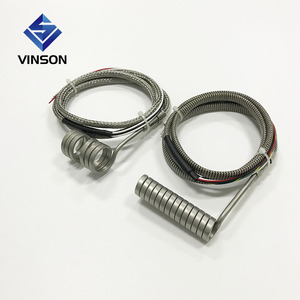
All categories
Featured selections
Trade Assurance
Buyer Central
Help Center
Get the app
Become a supplier

(2918 products available)




















Market Overview: The market for heating element coil wire has experienced notable fluctuations in recent years, influenced by varying industrial demands and technological advancements. According to IBISWorld, the broader metalworking machinery manufacturing industry in the U.S. has seen a decline in revenue at a CAGR of 1.5%, reaching $37.2 billion in 2023, largely due to the impacts of the COVID-19 pandemic. This downturn affected related sectors, including the manufacturing of specialized products such as heating element coil wires, which are essential in applications ranging from automotive to industrial machinery. The Wire Coil Packing Machine market, which includes equipment used in the production of coil wires, grew from USD 785.28 million in 2023 to USD 818.77 million in 2024 and is projected to continue growing at a CAGR of 5.39%, indicating a recovering demand for wire-based products that could positively influence the heating element coil wire sector.
Industry Insights: The demand for heating element coil wires is primarily driven by the increasing need for efficient heating solutions in various applications, including appliances and automotive components. The automotive sector's shift towards electric vehicles has prompted innovations in motor designs, which often utilize advanced heating elements for optimal performance and safety. As manufacturers seek to enhance motor efficiency—such as through high-speed motors with improved thermal management—the role of heating element coil wires becomes crucial. Furthermore, consumer behavior is shifting towards energy-efficient solutions, prompting manufacturers to invest in technology that minimizes energy consumption while maximizing performance. Major players in the industry are focusing on sustainable practices and innovative materials to meet these evolving consumer expectations, ensuring that heating element coil wires remain integral to the market's future growth.
A heating element coil wire is a wire that heats when electricity passes through it. Heating elements come in different types, such as coated, uncoated, or alloy wire elements.
Coated heating element coil wire
These provides protection and durability for heavy-duty applications. This is because they have additional coating that improves corrosion resistance, dielectric strength, thermal conductivity, and safety. Examples of coated heating element coil wires are Teflon-coated and ceramic-covered coil wires. Teflon-coated can withstand high temperatures, making them suitable for industrial ovens. On the other hand, ceramic-covered coil wires can last longer and are more heat-resistant than Teflon-coated ones. They are used in toasters and heat guns.
Uncoated heating element coil wire
This is available in straight, formed, or coiled shapes. It is less durable and requires frequent replacement. However, it costs less than coated wire. Uncoated is suitable for low-budget applications. However, it distributes heat unevenly, and hot spots can develop, causing fire hazards. Uncoated heating element coil wires are used in older electric kettles.
Alloy heating element coil wire
This is more durable than uncoated or coated heating element wires. It can withstand extreme temperatures and changes in climate. Additionally, they can last longer up to 25,000 hours. Some resistant alloys that are commonly used are Inconel, Kanthal A1, and Nichrome. Inconel is a trademark for a family of austenitic nickel-chromium superalloy metal powders. It is suitable for high-temperature applications like industrial furnaces, food processing equipment, and automotive parts. Kanthal A1 is a type of wire made of iron, chromium, and aluminum. It can withstand high temperatures, making it ideal for ceramics, glass, steel, and fiberglass industries. Nichrome is made of nickel and chromium. It is used to manufacture toasters, hair straighteners, and space heaters because of its ability to resist high heat and corrosion.
Some specifications are essential to note when buying a heating coil wire element. Since the purpose of these coils is to provide heat, it is also crucial to know if there are any safety standards, such as compliance with the Underwriters Laboratories (UL) or other similar bodies and directives, especially when clients require them.
Generally, the specifications for heating coil wires are as follows:
The lifespan of a heating element coil wire is not predictable because it depends on various factors, such as the quality of the material used to manufacture the coil, its size, operating temperature, voltage, wattage, and density. So, it is difficult to give exact figures. Generally, heating coils can last anywhere from 5 years to 20 years if they are not used in very adverse conditions.
To extend the lifespan of a heating coil element wire, it is best to take care of it, not expose it to harsh environmental conditions, and use it where the recommended specifications are not exceeding.
The uses of heating element coils in industry are quite diverse, highlighting the remarkable versatility of these little wires. From the food industry to healthcare, here are some of the distinct applications of heating coils.
Manufacturing Industries
Heating element coils are used in the food manufacturing industry in commercial kitchens to prepare food. This includes toasters, fryers, ovens, and grills. For example, toaster heating element coils are designed to brown slices of bread into toast. In microwave ovens, coils are used for defrosting and browning food items.
Packaging
Heat coils are used in food packaging. Shrink packaging uses heat to create a tight wrap around products using shrink films. Automatic conveyor belts fitted with heating coils are used to package solid objects like drinks and fast-food products.
Textile and Apparel
Heating coils are used in the textile and apparel industry to dry, heat, and iron fabric before processing it into clothes and other items. This includes steam irons, hair straighteners, and curlers. The heating element heats the curler and straightener, which in turn, styles and shapes the hair.
Medical Devices
Medical devices requiring sterilization are often done so using heating coils. Sterilization of medical devices is important as it maintains the integrity and effectiveness of medical equipment and ensures patient safety.
Construction
In construction, heat coils are used for thawing and heating cement. These processes heat the building material and increases its longevity and decreases the risk of any crack formations that may occur because of fluctuating temperatures.
The automotive industry
The automotive industry utilizes heating element coils for assembling automotive parts and components. Auto manufacturers apply adhesive with hot glue heating coils to assemble parts and create a strong bond between two or more components.
Electronics
In electronics, heating coils are used in soldering stations to connect wires or components to a circuit board. Soldering irons have heating coils inside them that heats the tip of the iron, making it easier to join two or more pieces together electrically.
Both the heating element coil wire and the surrounding material will influence the performance of the heating wire, such as the time required to heat the material, energy consumption, and the uniformity of heat distribution.
Consider the following when choosing heating element coil wires:
Compatibility with the material
Different applications require specific types of heating coils. The compatibility between the coil and the equipment or environment will determine whether it can function effectively. For instance, some non-metal heating coils are suitable for chemical environments to prevent corrosion.
Power output and voltage requirements
The required heating power and voltage strongly influence the choice of heating coils. Different coils provide different power outputs, which must be matched to the voltage needed for the equipment to ensure proper functioning.
Physical size and shape
The size and shape of heating coils must fit the specific equipment or application. Compact or uniquely shaped coils can reach areas traditional coils cannot, providing localized heating where needed.
Cost and energy efficiency
Calculating the long-term expenses of using heating coils, including energy consumption, maintenance, and replacement costs, is essential. Selecting energy-efficient coils can reduce operating expenses and environmental impact over time.
Warranty and customer support
When purchasing heating coils, ensuring proper warranty coverage and access to customer support is essential. A robust warranty protects against early failures, and responsive customer support helps address issues or concerns quickly and effectively.
Q: What is the heating element wire made of?
A: Heating wires have two core components, as discussed above, which are the hot core and the sheath. The hot core is usually made of low-resistance nickel-chromium alloy wire composed of 10-20% chromium and 70-90% nickel. Nonetheless, some manufacturers prefer using other materials like NiCrSi, NiCr, or Kanthal A1. The sheath, on the other hand, is usually made of high-resistant materials. Common examples include magnesium oxide and stainless steel. Nevertheless, depending on the application, the sheath can be made of other materials such as aluminum oxide.
Q: How do heating coils work?
A: Heating coils operate by converting electrical energy into heat energy through a process known resistance or resistive heating. When electricity flows through the heating coil, the electrical energy encounters resistance due to its conductive material. This resistance generates heat energy, raising the temperature of the coil. The heat generated can be used to heat other materials through direct contact or ambient heat transfer.
Q: What are the methods of manufacturing heating coils?
A: Industrial manufacturers use two methods to produce heating coils; the mandrel method and the cold coiling method. The cold coiling method is widely used in large-scale production due to its high accuracy and efficiency. During this method, the coil components are chilled below the coiling temperature. On the other hand, the mandrel method is suitable for producing custom coils. It entails wrapping the wire around a mandrel forming the coil shape.
Q: Are all heating coils the same?
A: No, heating coils come in different types, sizes, and shapes. Manufacturers normally customize the coils to meet specific requirements. They can adjust the diameter, length, and pitch of the coils. Also, they can choose different materials and coating suitable for the intended application.